mixed office waste paper recycling
Customize Office Paper Recycling Machine from Anyang Machinery
Anyang Machinery is a professional manufacturer of a wide range of pulp and paper equipment. Our main products include:
- High-strength corrugated/kraft liner board machines (for producing packaging paper products).
- Cultural paper machines (for printing paper, carbonless copy paper, etc.).
- Toilet tissue paper machines (for high-grade household tissue, napkins, facial tissue, etc.).
- As well as precision cylinder moulds, beater machines, and other pulp preparation and papermaking equipment.
Anyang Machinery has: 1 Technology R&D Center, 3 Riveting and Welding Workshops, 4 Machining Workshops, 1 Pre-assembly Workshop (100m × 20m × 12m, capable of pre-installing paper machines with a center distance of up to 10 meters). Over 50 sets of large and medium-scale equipment, covering functions such as R&D, manufacturing, quality testing, and assembly/commissioning.
We are a high-tech enterprise integrating scientific research, design, manufacturing, installation, commissioning, and turnkey project contracting, specializing in the production of pulp and papermaking equipment. The company is equipped with advanced CNC precision machining centers, laser cutting machines, welding systems, surface treatment systems, and testing and measurement equipment.
Anyang Machinery has successfully developed a full set of internationally advanced systems including pulping systems, screening systems, cleaning systems, and approach flow systems. These systems are designed to offer: lower energy consumption, greater operational stability, reduced fiber loss and longer service life.

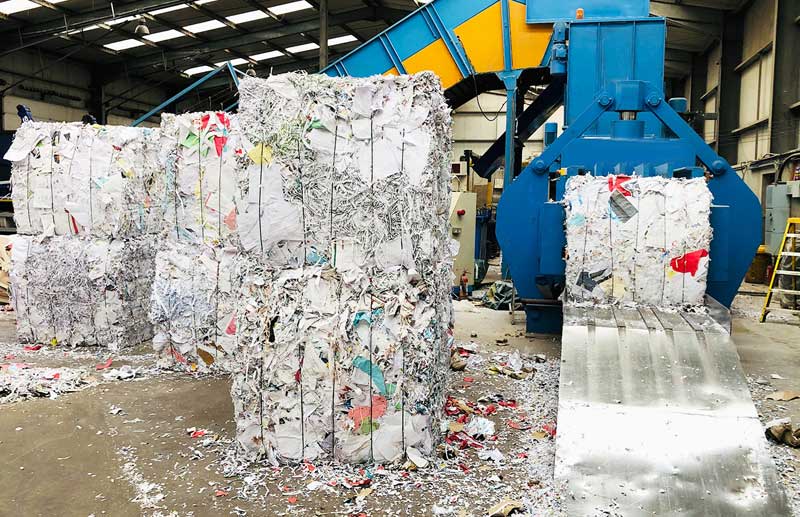
Our product lines cover:
- Waste paper pulp,
- Deinked pulp,
- Special fiber pulp,
- Chemical pulp,
- Semi-chemical pulp,
- Dry fiber pulp.
And other customized turnkey solutions.
Anyang Machinery keeps its technology aligned with global standards and possesses strong design and R&D capabilities to deliver complete, turnkey project solutions. We look forward to working with you hand in hand to build a greener, better future.
About Mixed Office Waste Paper (MOW)
Mixed Office Waste Paper (MOW) refers to various types of white and printed paper waste generated in office environments, typically including:
- Waste printing paper and photocopy paper.
- Envelopes, sticky notes, office correspondence.
- A small amount of color or laser-printed paper.
- Mixed white writing paper.
Main characteristics of Mixed Office Waste Paper (MOW)
High proportion of white paper with good fiber quality.
Often contains toner, binding glue, staples, plastic covers, and other impurities.
Compared with corrugated paper, it requires more intensive deinking, but the final paper has better whiteness.
MOW has a high recycling potential and is an ideal raw material for producing high-quality bleached deinked pulp (DIP) and cultural paper. It is widely used in the recycled paper manufacturing industry.
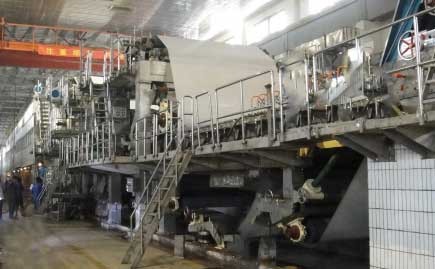
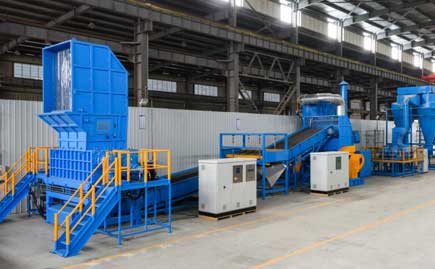
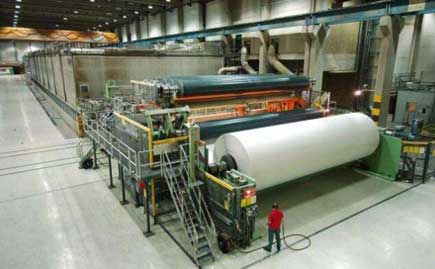
How to Recycle Office Paper?
Given the high recyclability of MOW, how to recycle office paper becomes a key question. In general, the complete process flow for recycling mixed office waste paper is as follows:
Mixed Office Waste Paper → Pre-sorting & Preparation → High-consistency Pulping → Fine Screening → Deinking → Washing & Thickening → Bleaching → Refining → Paper Drying → Reeling & Cutting.
Step 1 Sorting and Pre-treatment
Through sorting and pre-treatment of mixed office waste paper, papermaking factories can remove non-paper impurities and improve the purity of the subsequent pulp.
Process Steps
Manual Pre-sorting: Remove plastic covers, metal clips, staples, etc.
Optical Sorting: Automatically identify non-paper materials or heavily colored paper.
Magnetic Separator: Remove fine metal particles.
Step 2 High-Consistency Disintegration
High-consistency disintegration refers to breaking down waste paper into fiber pulp while achieving initial deinking. It is typically carried out using a High-Consistency Pulper (HC Pulper) with a pulp consistency of 8%–15%, suitable for processing MOW (Mixed Office Waste). Ragger: Removes plastic tapes and entangled materials and Trash Well: Separates large-sized impurities in the early stage.Step 3 Fine Screening and Cleaning
Fine screening and cleaning are used to remove small stickies, undispersed paper fragments, resin lumps, and other fine contaminants.
This process typically involves equipment such as: Fine Pressure Screen. Knotter and High-Efficiency Centrifugal Cleaner (Centricleaner).
Step 4 Deinking
Deinking is a critical step in MOW (Mixed Office Waste) processing. Flotation deinking is a commonly used deinking method. The deinking process involves adding surfactants and deinking aids, utilizing air bubbles to lift ink particles to the surface. We offer both vertical flotation deinking and horizontal flotation deinking systems for removing free-state ink particles, as well as partial fillers and lightweight adhesives from waste paper pulp. The key difference lies in the cell structure: vertical systems feature a multi-stage series configuration, while horizontal systems employ a two-stage, multi-level series design. Customers can select the most suitable deinking cell based on their specific needs.
Vertical Flotation Deinking Cell Technical Parameters
|
Model
Item
|
ZFM1 | ZFM2 | ZFM3 | ZFM4 | ZFM5 | ZFM6 | ZFM7 | ZFM8 | ZFM9 | ZFM10 |
|---|---|---|---|---|---|---|---|---|---|---|
| Throughput (m³/h) | 256 | 400 | 512 | 624 | 800 | 976 | 1152 | 1344 | 1456 | 1600 |
| Pulp Consistency (%) | 0.8–1.2 | |||||||||
| Inlet Pressure (MPa) | 0.15–0.2 | |||||||||
Horizontal Flotation Deinking Cell Technical Parameters
|
Model
Item
|
FE115 | ZFE135 | ZFE155 | ZFE175 | ZFE195 | ZFE1115 | ZFE1135 | ZFE1155 | ZFE1175 | ZFE1195 |
|---|---|---|---|---|---|---|---|---|---|---|
| Cell Specification | 1200/3800 | 1500/3800 | 2200/3800 | 3000/3800 | 3800/3800 |
4000/4100
|
4000/4400 | 6000/4100 | 6000/4400 | 8000/4400 |
| Throughput (m³/h) | 420 | 520 | 780 | 1050 | 1300 | 1550 | 1750 | 2300 | 2500 | 3250 |
| Pulp Consistency (%) | 0.8–1.2 | |||||||||
| Inlet Pressure (MPa) | 0.07-0.12 | |||||||||
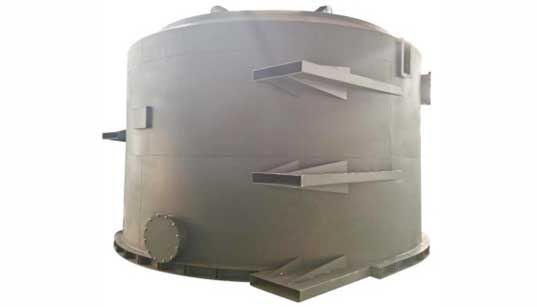

Step 5 Washing & Thickening
Vacuum drum washers, single-screw thickeners, and gravity disc filters are employed to remove residual ink, floatable impurities, and excessive chemicals from the pulp slurry.
Step 6 Bleaching
Utilizing chlorine-free processes, hydrogen peroxide (H₂O₂) or oxygen (O₂) is applied in enclosed bleaching reactors with pulp agitation systems. This treatment elevates pulp brightness to paper-grade standards, making it particularly suitable for cultural paper production.
Step 7 Refining
Disc refiners or high-frequency consistency regulators are used to optimize fiber length distribution, thereby enhancing paper strength and formation characteristics.
Step 8 Paper Formation & Rewinding Section
The final papermaking stage offers options between small-scale fourdrinier machines or cultural paper machines, complemented by rewinding units and precision cutters (with optional A4/letter-size configurations).
Process Highlights & Advantages
✅ High Recycling Rate
Achieves 70%-80% pulp yield from MOW (Mixed Office Waste), maximizing resource utilization.
Optimized fiber recovery reduces raw material costs.
✅ Superior Brightness & Low Ink Residue
Combines flotation deinking + H₂O₂ bleaching for high-purity pulp with minimal speck counts.
Ideal for producing cultural/printing paper requiring excellent printability and appearance.
✅ Eco-Friendly & Sustainable
Chlorine-free bleaching (TCF/ECF processes) eliminates toxic byproducts.
Biodegradable chemicals ensure compliant wastewater discharge (meets ISO 14001 standards).
Low-energy design reduces carbon footprint.
✅ Flexible & Cost-Effective Solutions
Modular systems adaptable for small-to-medium paper mills or eco-packaging manufacturers.
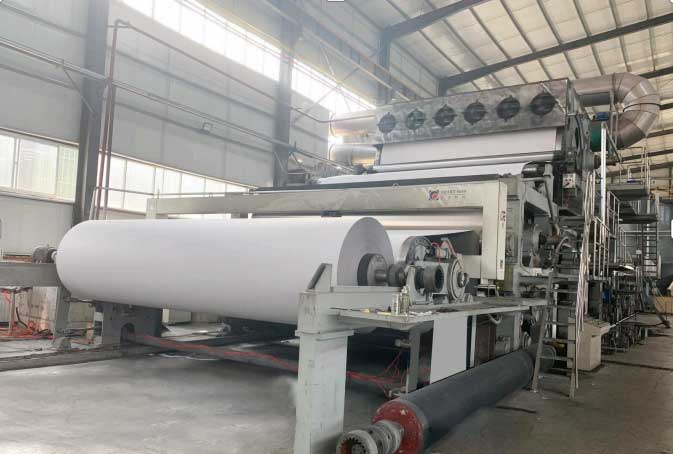
Anyang Machinery Mixed Office Waste (MOW) Paper Recycling Solution
Mixed Office Waste (MOW) is commonly found in office buildings, government agencies, printing plants, and similar locations. As a readily available and cost-effective raw material, MOW meets environmental requirements for pulp production while saving approximately 30%-40% energy compared to virgin pulp.
The recycling of MOW not only reduces paper manufacturing costs for enterprises but also provides society with greener, more eco-friendly office paper solutions. Through advanced processing technologies and specialized equipment, MOW can be efficiently converted into high-quality recycled cultural paper, contributing to the development of a circular economy.
Anyang Machinery offers complete MOW recycling line solutions, from customized process design and equipment engineering to energy-efficient deinking system upgrades. We also offer tailored cultural paper production line equipment and make sure on-site installation, commissioning, and operator training.
For specific project budgets, equipment lists, or case studies about mixed office waste paper solution, please contact our team for further discussion.


